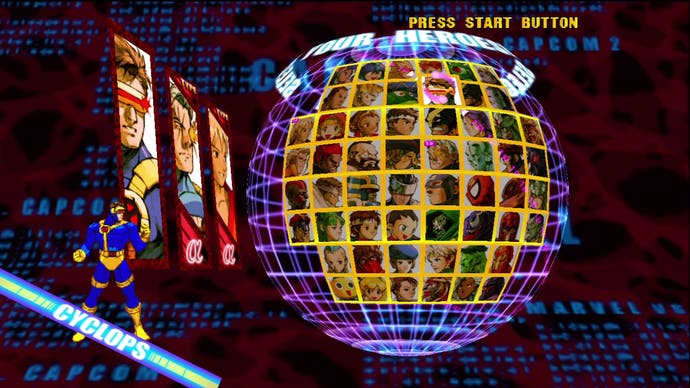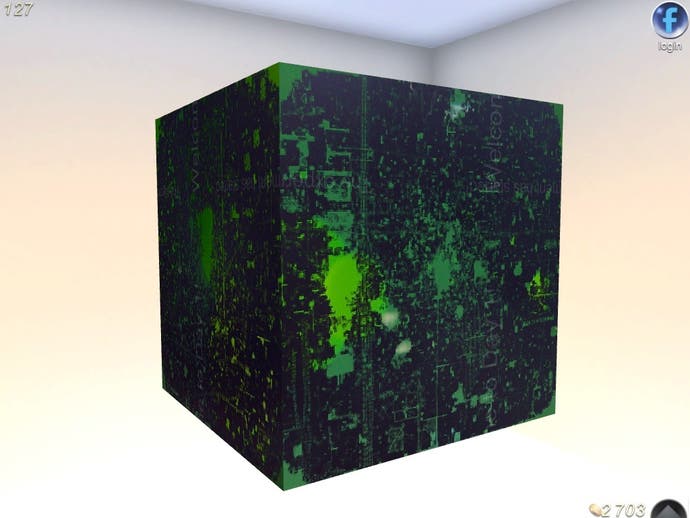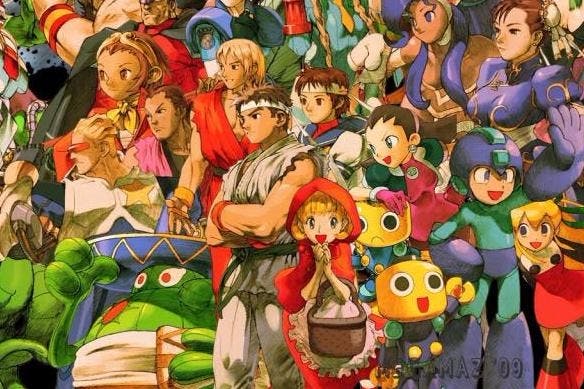How Marvel vs. Capcom 2 brought us together
The lost joy of gaming's great community projects.
Imagine the murmuring crowd, congregated around the arcade machine the first time that it was switched on. It had been four years since the 1996 release of Marvel vs. Capcom: Clash of Super Heroes, the hyperactive, colourful, gloriously messy fighting game that hoisted the world of comic books and fighting games together. Anticipation for this sequel was accordingly high. As the operator stepped back and the attract mode sequence, with its unshakably catchy refrain "I wanna take you for a ride" began to play, everyone wanted to know the same thing: whom do we get to play as?
The answer was unexpected. Of the fifty-six playable characters in the arcade version of Marvel vs. Capcom 2, only twenty-eight are unlocked when the machine first blinks to life. The other half of the roster, which includes money-spinning favourites Chun Li, Ken, Iron Man, Rogue and Storm appear only as interest-baiting silhouettes. Unlockable characters had been a staple of fighting games in the arcades for years, but they were usually of the Easter Egg variety: unlocked via winding strings of arcane button inputs (to pick Kouryu, the final boss in SNK's Last Blade 2, for example, you must tap out a twenty-button long sequence). In Capcom's new game, by contrast, there was no open sesame phrase that allowed a player to access the army of blacked out figures. Any attempts to find a buried passcode were in vain.
Capcom opted instead for a different kind of scheme, one based on experience points and collective endeavour. Every time a player pushed a coin into the machine, the game itself earned 1XP. New characters and new costumes were unlocked like new abilities in an RPG: when the machine passed certain XP thresholds. The first character, for example, was unlocked when the machine reached 400XP (£400, if one credit cost one pound). A new costume was unlocked at 800 XP. This sequence continued all the way up to level 73, a tier that required 29,200XP, at which point the final unlockable character was made available to play (one further costume was unlocked at Level 84). To help accelerate the process slightly, after every ten hours, the machine contributed 100XP to the pot. In this way the game turned unlocking characters into a collective project for its players, who were invited to invest in play for the community's benefit. In its ingenious design Capcom had stumbled upon a fascinating co-operative metagame.

Unwittingly or not, the design drew upon the findings of the American psychologist BF Skinner. In one of his experiments carried out in the mid-20th Century, Skinner presented rats with a button which, when pressed, would dispense either a tiny morsel of food, a big dollop of food, or no food at all. The outcome was random. Skinner then set up a parallel experiment in which the rats were given a predictable outcome whenever pressing the button: a morsel of food with every button press. Skinner quickly found that the rats that were presented with the intermittent reward schedule would press the button more regularly and for a much longer amount of time than those that were given a predictable prize. Likewise, in Marvel vs. Capcom 2, the order in which characters are unlocked is random. (Capcom only specifies the 'side' from which the random character will be picked.) This meant that players wouldn't be put off when the next character in the unlock sequence was an unpopular choice. Instead, the thrill of not knowing the value of the reward encouraged greater investment.
While creative collaboration between strangers is the essence of Minecraft, examples of structured communal activity in video games are relatively rare. Peter Molyneux's Curiosity Cube, launched in 2012, in which players were invited to chip bricks away from a giant cube, was a widely pilloried experiment, albeit one that had shades of ingenuity. The project was spoiled by an alluring, unmet promise. At the game's launch Molyneux claimed the person who chipped away the final block would be given a life-changing prize, an idea, he claimed, that had come to him decades earlier. In fact, the winner was merely given the opportunity to appear as a character in Molyneux's next game; even then, the prize was poorly executed. Curiosity Cube was a less pure experiment than Capcom's, as players were simultaneously collaborating and competing: they had to work together to break down the cube, but ultimately everyone wanted to have that final donk of the pickaxe.
Keita Takahshi's Noby Noby Boy was an inversion of Molyneux's idea. Instead of cooperating to break something apart, here players co-operated to build something up: specifically, by stretching a worm-like alien girl till the length of her body reached all the way from Earth to the edge of our solar system. The game, released for the PlayStation 3 and mobiles in 2009, was officially 'completed' six years later. The girl, whose length could be added to by every player in the world, passed Uranus in 2011, Neptune in 2014 and finally, after a few tweaks to the stretch-multipliers from Namco to speed up the process, passed the sun and returned home in 2015.

Curiosity Cube and Noby Noby Boy both have their charms, but Capcom's design in Marvel vs. Capcom 2 achieved something else entirely. Through its situation in the arcades, it drew players together not only in spirit, but physically too. You might say that there was an absence of ludo-geographical dissonance: players not only shared a goal, they also shared a destination. And this physical focal point, be it an arcade on the end of a local pier, or an arcade in the middle of a capital city, heightened the sense of community spirit. As the arcades have withered, this kind of communal coming together has been relegated to boisterous game exhibitions such as E3, and low-key indie gatherings such as The Wild Rumpus. While Nintendo hasn't been a major player in the arcades for decades, through StreetPass and the forthcoming Switch, the company has been obsessed with trying to recapture the arcade spirit in some way. For now, however, curious, joyful designs like Capcom's have been regretfully lost to culture and technology's ever-shifting sands.

